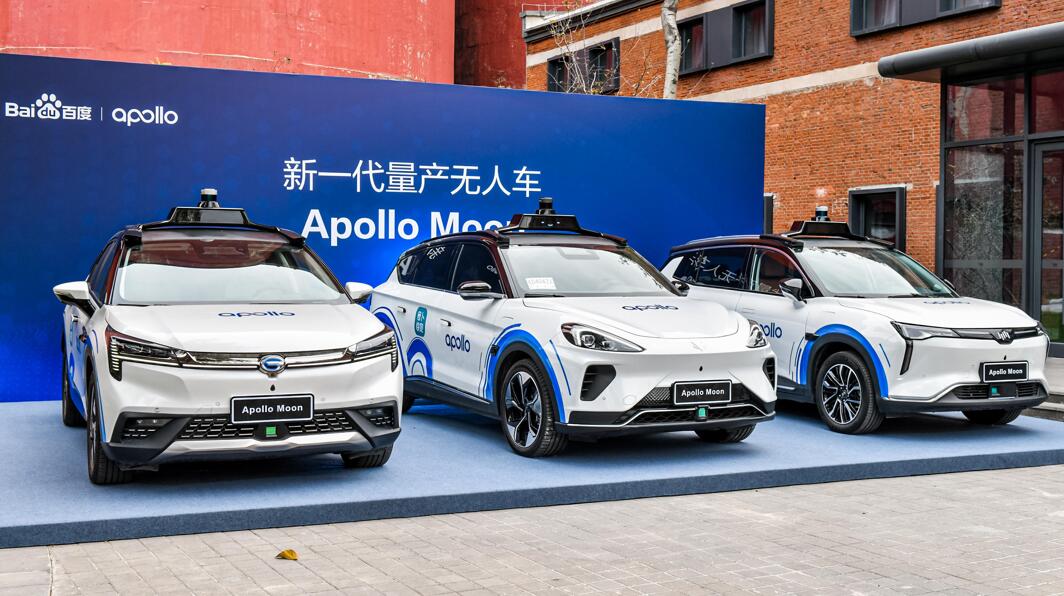In the Chinese definition, driving automation is divided into six levels, with levels 0-2 being driver assistance, where the system assists humans in performing dynamic driving tasks.
(Image credit: Baidu)
In the absence of a local definition of autonomous driving levels in China, car companies have described their cars' autonomous driving capabilities in a variety of ways, many of which are even misleading.
Now, with a national standard coming into effect, this situation is expected to be gradually standardized.
China's vehicle driving automation classification standard (GB/T 40429-2021), published by the Standardization Administration of China on August 20, 2021, has officially come into effect on March 1 of this year.
Previously, the widely accepted definition of autonomous driving levels in China came from SAE International, which divided autonomous driving levels from L0 to L5. The widely known L2 assisted driving function is based on this standard.
However, many car companies use the words "L2.5", "quasi-L3" or even "L2.9" for marketing purposes, exaggerating their assisted driving capabilities while trying to avoid legal risks.
In SAE International's definition, if a vehicle is capable of autonomous driving at the L3 level, it means that the driver does not need to drive the car.
The introduction of China's driving automation classification standards is intended to bring these disorders under check in order to allow the industry to develop in a more orderly manner.
As defined in China, driving automation is also divided into six levels, with levels 0-2 being driver assistance, where the system assists humans in dynamic driving tasks and the driving subject remains the driver.
It has levels 3-5 for autonomous driving, where the system performs dynamic driving tasks instead of humans under the designed operating conditions, and the driving subject is the system when the function is activated.
The names and definitions of these levels in the standard are as follows:
Level 0 Driving Automation
Level 0 driving automation is also referred to as emergency assistance.
A system with this capability cannot continuously perform lateral or longitudinal vehicle motion control in dynamic driving tasks, but has the ability to continuously perform partial target and event detection and response in dynamic driving tasks.
Level 1 Driving Automation
Level 1 driving automation is also referred to partial driver assistance.
A system that continuously performs lateral or longitudinal vehicle motion control in a dynamic driving task under its designed operating conditions and has the capability to detect and respond to partial targets and events appropriate to the lateral or longitudinal vehicle motion control being performed.
Level 2 Driving Automation
Level 2 driving automation is also referred to as combined driver assistance.
The system continuously performs lateral and longitudinal vehicle motion control in dynamic driving tasks under the conditions for which it is designed to operate, and has the capability to detect and respond to partial targets and events appropriate to the lateral and longitudinal vehicle motion control being performed.
Level 3 Driving Automation
Level 3 driving automation is also referred to as conditionally automated driving.
The system continuously performs all dynamic driving tasks under its designed operating conditions.
Level 4 Driving Automation
Level 4 driving automation is also referred to as highly automated driving.
The system continuously performs all dynamic driving tasks under its designed operating conditions and automatically implements a minimal risk strategy.
Level 5 Driving Automation
Level 5 driving automation is also referred to as fully automated driving.
The system continuously performs all dynamic driving tasks under any drivable condition and automatically executes a minimal risk strategy.
The following is the original Chinese version of the standard, which includes English translations of some terms.
http://c.gb688.cn/bzgk/gb/showGb?type=online&hcno=4754CB1B7AD798F288C52D916BFECA34



